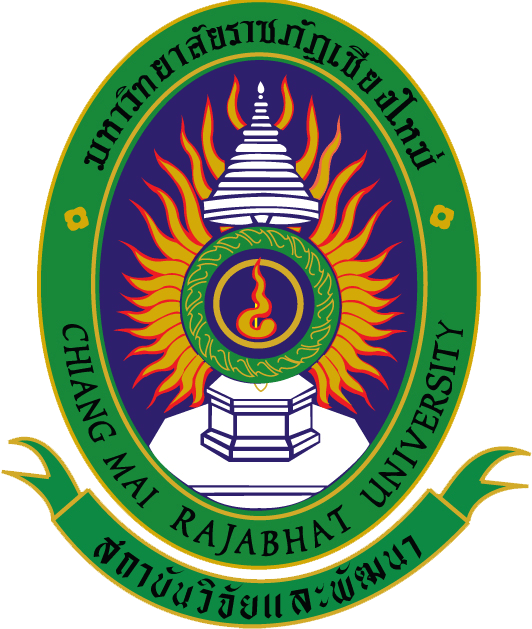
ระบบสารสนเทศงานวิจัย สถาบันวิจัยและพัฒนา มหาวิทยาลัยราชภัฏเชียงใหม่
Research Information System(RIS)
การประดิษฐ์กล่องหมักปุ๋ยชีวภาพแบบใช้อากาศและการผลิตปุ๋ยหมักชีวภาพที่มีมูลด้วงกว่างเป็นองค์ประกอบหลัก
ณัฏฐนันท์ เรียบเรียง
คณะวิทยาศาสตร์และเทคโนโลยี
คำสำคัญ :
เลขทะเบียน :
1631-65-SCI-CMRU
บทคัดย่อ
งานวิจัยนี้มีวัตถุประสงค์เพื่อศึกษาธาตุอาหารที่จำเป็นต่อพืชจากมูลด้วงกว่างชน เลี้ยงด้วยอาหารที่มีองค์ประกอบหลักต่างชนิดกัน ได้แก่ ขี้เลื่อย (มูล 1) และ ซังข้าวโพด (มูล 2) และปุ๋ยหมักชีวภาพจากมูลด้วงกว่างชนทั้งสองชนิด โดยปุ๋ยหมักชีวภาพดังกล่าวใช้จุลินทรีย์กลุ่ม EM (Effective Microorganisms) และใช้กระบวนการหมักแบบใช้อากาศ วิเคราะห์ปริมาณธาตอาหารหลักของพืช ได้แก่ ไนโตรเจน (N) ฟอสฟอรัส (P2O5) และโพแทสเซียม (K2O) พบว่ามูลด้วงกว่าที่เลี้ยงด้วยขี้เลื่อย (มูล 1) และ ซังข้าวโพด (มูล 2) แสดงธาตุอาหารไนโตรเจนต่ำกว่าเกณฑ์ที่กรมวิชาการเกษตรกำหนด สำหรับมูล 2 มีปริมาณธาตุอาหารไนโตรเจน และฟอสฟอรัส สูงกว่ามูล 1 ขณะที่ธาตุอาหารโพแทสเซียมมีปริมาณใกล้เคียงกัน เนื่องจากองค์ประกอบของธาตุในอาหาร (ขี้เลื่อย และซังข้าวโพด) ที่ใช้เลี้ยงด้วงกว่างมีปริมาณที่แตกต่างกัน ซึ่งซังข้าวโพดมีปริมาณของไนโตรเจนและโพแทสเซียมสูงกว่าขี้เลื่อย สำหรับการวิเคราะห์ธาตุอาหารจำเป็นของพืชในปุ๋ยหมักทั้งสองสูตร พบว่าปุ๋ยหมักชีวภาพสูตร 1 แสดงองค์ประกอบธาตุอาหารไนโตรเจน และโพแทสเซียมสูงที่สุดโดยมีปริมาณร้อยละ 1.5 และ 1.3 ตามลำดับ และฟอสอรัสมีปริมาณใกล้เคียงกับปุ๋ยหมักชีวภาพสูตรที่ 2 จากงานวิจัยนี้จะเห็นได้ว่าปุ๋ยหมักชีวภาพจากมูลด้วงกว่างชนมีธาตุอาหารหลักที่จำเป็นต่อพืชที่ปริมาณสูง เมื่อเทียบกับปุ๋ยหมักชีวภาพที่นิยมนำไปใช้ในการเกษตร ดังนั้นมูลด้วงกว่างชนเป็นมูลชนิดหนึ่งที่มีประโยชน์และเหมาะกับการนำมาทำเป็นปุ๋ยหมักชีวภาพเพื่อใช้ในการเกษตรต่อไป
Abstract
This research aimed to study on the plant nutrients from Hercules beetle dung with feeding different main constituent diets such as a sawdust (dung 1) and a corncob (dung 2), and bio-compost from two types of the guang beetle dung. The bio-compost was used an effective microorganisms (EM) and used aerobic fermentation process. The macronutrients of plants are nitrogen (N), phosphorus (P2O5) and potassium (K2O) were analyzed. It was found that the dung with feeding different main constituent diets such as a sawdust (dung 1) and a corncob (dung 2) showed the quantity of nitrogen (N), lower than the criteria set by the department of agriculture. For the dung 2, the nitrogen and phosphorus nutrient content were higher than the dung 1 while the potassium nutrient content was similar. Owing to the mineral composition in food (the sawdust and the corncob) used to feed the Hercules beetle was different which the corncob had higher nitrogen and potassium content than the sawdust. For the analysis of plant essential nutrients in both bio-compost formulations, it was found that the bio-compost formula 1 showed the highest nitrogen nutrient and potassium nutrient with the amount of 1.5 and 1.3 %, respectively. The amount of phosphorus nutrient was similar to the bio-compost formula 2. From this research, it can be seen that bio-compost from beetle dung contain high amount of essential macronutrients for plants when compared to other bio-compost with extensively using in agriculture. Therefore, the Hercules beetle dung was a one of dung which was useful and suitable for use as bio-compost for further agricultural.
ไฟล์งานวิจัย
เล่ม-ณัฏฐนันท์-2-เล่มสมบูรณ์.pdf
ข้อมูลการตีพิมพ์
ชื่อบทความ :
แหล่งที่ตีพิมพ์ :วารสารวิชชา มหาวิทยาลัยราชภัฏนครศรีธรรมราช ปีที่ 43 ฉบับที่ 2 กรกฎาคม - ธันวาคม 2567
ปีที่ตีพิมพ์ :2567
9 18 ส.ค. 2565
กองทุนวิจัย มหาวิทยาลัยราชภัฏเชียงใหม่
202 ถ.ช้างเผือก ต.ช้างเผือก อ.เมือง จ.เชียงใหม่ 503000
053-88-5555